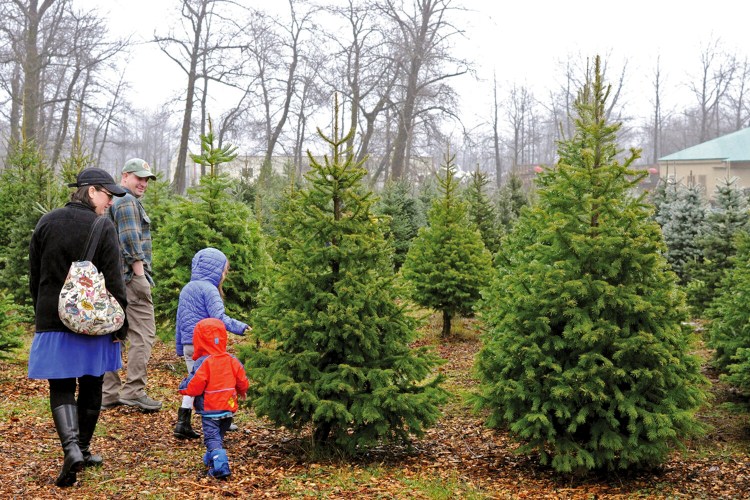A trade group representing Christmas tree growers made headlines this month by noting that tree production is down in 2019.
The proximate cause of the slump, according to the National Christmas Tree Association, traces back to the Great Recession, when farmers cut back on plantings amid sluggish sales. But the industry as a whole is facing a much bigger challenge.
According to the USDA’s Census of Agriculture, Christmas tree production fell nearly 30 percent from 2017 to 2002, the earliest year for which data is available. National surveys point to the reason: Each year, fewer Americans are putting up trees during the holidays. And those who do are increasingly choosing artificial ones.
Aging baby boomers are driving much of this shift, as they opt for the convenience of plastic trees that can be reused year after year.
The USDA’s census best conveys the scope of the challenge facing the natural tree industry. In 2002, farmers harvested close to 21 million trees. By 2017, that figure stood near 15 million.
Tim O’Connor, executive director of the Littleton, Colorado-based Christmas tree group, said via email to The Post that “the industry was in a big oversupply situation in the late 1990s up to the recession in 2008. Growers were battling each other to find buyers and prices dropped below the cost of production. The trend line of USDA’s data is accurate, as the industry sold off its oversupply it had fewer trees to sell.”
O’Connor also noted that the Agricultural Census is almost certainly missing data from an unknown number of very small producers who aren’t considered farmers for the USDA’s purposes.
National survey data help fill out the picture. The percentage of households putting up a Christmas tree fell from 90 percent in 1989 to 76 percent in 2018. The percentage of real trees has dropped even faster: from 47 percent in 1989 to 21 percent last year.
Artificial trees have gained in popularity, like so many other domains, as time-starved Americans prioritize convenience. They don’t shed needles, trigger asthma attacks or need to be watered. And, as the Consumer Product Safety Commission is so fond of reminding us, a single errant spark won’t turn one into a roaring inferno within seconds.
But the biggest factor of all may be demographics: As children move out and parents enter their retirement years, the annual holiday pilgrimage to the tree farm may have less appeal than it once did. Survey data back this up: In 2014, for instance, 44 percent of the buyers age 30 to 49 put up a real Christmas tree. Among those 65 and older, just 16 percent did the same while a staggering 81 percent chose an artificial tree.
The National Christmas Tree Association is well aware of these trends. In 2018, “we did see significant market share loss to fake trees, particularly to baby boomers as their kids grew up and left home,” O’Connor said.
If millennials are indeed killing off many of their parents’ cherished cultural icons, like cereal, golf, mayonnaise and home prices, boomers may be exacting a little payback by passing up on authentic pine-scented Christmases of their children’s memories.
The natural tree industry is currently hoping that as younger adults have kids of their own they’ll want to re-create those holiday experiences with their own offspring.
“The trends are very favorable to real trees today,” O’Connor said. “Many families want to have authentic experiences, do good things for the environment and know the story behind the products they buy. Real trees match up completely with that; a fake tree made from PVC plastic in a Chinese factory does not.”
Copy the Story LinkSend questions/comments to the editors.



Success. Please wait for the page to reload. If the page does not reload within 5 seconds, please refresh the page.
Enter your email and password to access comments.
Hi, to comment on stories you must . This profile is in addition to your subscription and website login.
Already have a commenting profile? .
Invalid username/password.
Please check your email to confirm and complete your registration.
Only subscribers are eligible to post comments. Please subscribe or login first for digital access. Here’s why.
Use the form below to reset your password. When you've submitted your account email, we will send an email with a reset code.